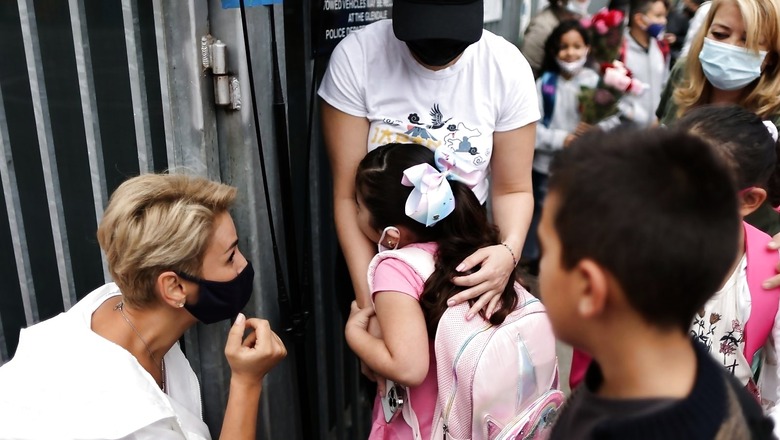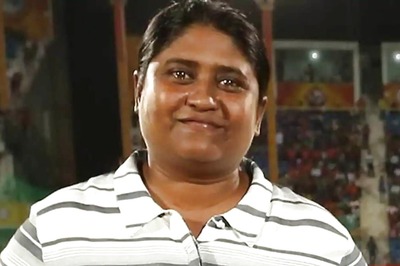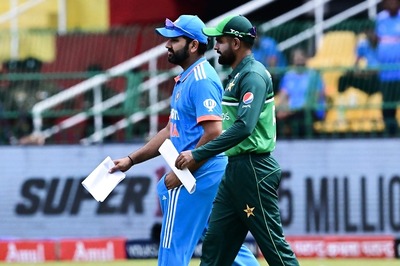
views
Will Grogan stared blankly at his ninth grade biology classwork. It was material he had mastered the day before, but it looked utterly unfamiliar.
“I don’t know what you’re talking about,” he blurted. His teacher and classmates reminded him how adeptly he’d answered questions about the topic during the previous class. “I’ve never seen this before,” he insisted, becoming so distressed that the teacher excused him to visit the school nurse.
The episode, earlier this year, was one of numerous cognitive mix-ups that plagued Will, 15, after he contracted the coronavirus in October, along with issues like fatigue and severe leg pain.
As young people across the country prepare to return to school, many are struggling to recover from lingering post-COVID neurological, physical or psychiatric symptoms. Often called “long COVID,” the symptoms and their duration vary, as does the severity.
Studies estimate long COVID may affect between 10% and 30% of adults infected with the coronavirus. Estimates from the handful of studies of children so far range widely. At an April congressional hearing, Dr. Francis Collins, director of the National Institutes of Health, cited one study suggesting that between 11% and 15% of infected youths might “end up with this long-term consequence, which can be pretty devastating in terms of things like school performance.”
The challenges facing young patients come as pediatric COVID-19 cases rise sharply, driven by the highly contagious delta variant and the fact that well under half of 12- to 17-year-olds are fully vaccinated and children under 12 are still ineligible for vaccines.
Doctors say even youths with mild or asymptomatic initial infections may experience long COVID: confounding, sometimes debilitating issues that disrupt their schooling, sleep, extracurricular activities and other aspects of life.
“The potential impact is huge,” said Dr. Avindra Nath, chief of infections of the nervous system at the National Institute of Neurological Disorders and Stroke. “I mean, they’re in their formative years. Once you start falling behind, it’s very hard because the kids lose their own self-confidence too. It’s a downward spiral.”
Will, an Eagle Scout, a talented tennis player and a highly motivated student who loves studying languages so much that he takes both French and Arabic, said he used to feel “taking naps is a waste of sunlight.”
But COVID made him so fatigued that he could barely leave his bed for 35 days, and he was so dizzy that he had to sit to keep from fainting in the shower. When he returned to his Dallas high school classes, brain fog caused him to see “numbers floating off the page” in math, to forget to turn in a history paper on Japanese Samurai he’d written days earlier and to insert fragments of French into an English assignment.
“I handed it to my teacher, and she was like ‘Will, is this your scratch notes?’” said Will, adding that he worried: “Am I going to be able to be a good student ever again? Because this is really scary.”
‘We don’t have any sort of magic treatment’
Nearly 4.2 million young people in the United States have had COVID-19, according to the American Academy of Pediatrics. Relatively small percentages have been hospitalized for initial infections or developed a condition called Multisystem Inflammatory Syndrome in Children (MIS-C) that can emerge several weeks later. Doctors expect considerably more will experience long COVID.
At Boston Children’s Hospital, where a program draws long COVID patients from across the country, “we’re seeing things like fatigue, headaches, brain fog, memory and concentration difficulties, sleep disturbances, ongoing change in smell and taste,” said Dr. Molly Wilson-Murphy, a neuroinfectious diseases specialist there. She said most patients were “kids who had COVID and weren’t hospitalized, recovered at home, and then they have symptoms that just never go away — or they seem to get totally better and then a couple of weeks or a month or so after, they develop symptoms.”
Dr. Amanda Morrow, co-director of the pediatric post-COVID-19 clinic at the Kennedy Krieger Institute in Baltimore, said getting treatment early might help recovery. Post-COVID clinics find they need multiple specialists and approaches including exercise, cognitive behavioral therapy, sleep modification and medication for issues such as respiratory and gastrointestinal problems.
“We don’t yet have any sort of good predictors of who will be affected, how much they’ll be affected and how quickly they’ll recover,” Wilson-Murphy said. “We don’t have any sort of magic treatment.”
Much about long COVID remains mysterious. Some symptoms resemble aftereffects of concussions and other brain injuries. Some, like post-exertional malaise — when physical or mental exertion increases exhaustion — echo symptoms of chronic fatigue syndrome, experts say.
Some patients develop Postural Orthostatic Tachycardia Syndrome, or POTS, which involves lightheadedness and racing heart rates upon standing up.
Some studies report higher proportions of older children with long-term issues. That might be because adolescents find some symptoms more disruptive or because after puberty, hormones might amplify immune responses, Nath said.
An April study by the United Kingdom’s Office for National Statistics found that 9.8% of 2-11-year-olds and 13% of 12-16-year-olds infected with the coronavirus reported continuing symptoms five weeks later. After 12 weeks, rates remained significant: 7.4% in the younger group and 8.2% in the older group.
In another U.K. study, 4.4% of 1,734 children had symptoms more than four weeks post-COVID, over four times as high as the percentage with symptoms four weeks after non-COVID illnesses like flu. About 2% of COVID patients had symptoms after eight weeks.
Many young patients were previously healthy, said Dr. Laura Malone, co-director of Kennedy Krieger’s program. Some doctors have seen some youths with long COVID who had previous issues like migraines or anxiety, but it’s unclear whether there’s any connection.
Before the pandemic, Sierra Trudeau was diagnosed with anxiety after her parents’ divorce, said her mother, Heather Trudeau. In May, six months after contracting the coronavirus, Sierra’s long COVID symptoms remained worrisome enough to make a 50-mile trip to Boston Children’s Hospital.
In an interview this spring, Sierra, 12, and her mother described Sierra’s fatigue, headaches, forgetfulness and other symptoms. Her mother asked Sierra: “Do you feel like it’s been worse for your anxiety, and like your mental health, like your emotions?”
“Yeah,” Sierra said softly.
“Everything makes her cry and that is not her,” Trudeau said. “It’s just been so hard.”
During that May appointment, which The New York Times observed, Dr. Jane Newburger, a vice chair of cardiology, told Sierra: “Part of what can happen is you feel rotten and so, you know, you sit all day. You get deconditioned, and you get into a little bit of a cycle where it’s hard to pull out.”
Still, Newburger said, “You can’t throw someone back into exercise because you’ll take one step forward and two backward.”
She said examinations of Sierra’s heart and other tests showed no notable physiological problems, similar to many post-COVID pediatric patients.
Nath said some issues might be caused by inflammation that damages blood vessels, including in the brain.
He said another theory was that “the immune system somehow gets deranged and then it’s hard to shut down,” or that residual virus or genetic fragments keep immune responses activated. “It’s like the song is gone, but the music lingers on,” he said.
One optimistic sign for Sierra was that her smell and taste returned this spring.
In late July, Trudeau said Sierra’s symptoms had improved, partly because of new antidepressant and anti-anxiety medications, although “her energy level still varies from day to day.”
‘Nothing like that has ever happened to me’
“Dang, why am I always so sick?” Messiah Rodriguez, 17, asked himself. Before getting COVID around Thanksgiving, he never had health problems, he and his mother, Kimmie Ezeike, said.
An energetic point guard and shooting guard on school and travel basketball teams, Messiah had to stop playing after running off the court and vomiting in his backpack during two games.
“Nothing like that has ever happened to me, and I’ve been playing sports my whole life,” he said. He tried basketball again recently, but experienced back pain and an orthopedist advised him to take another break.
“Messiah is probably one of the more affected kids I’ve seen,” said Dr. Alexandra Yonts, director of the COVID-19 Longitudinal Care Clinic at Children’s National Hospital in Washington, D.C.
Messiah has also developed mental health issues post-COVID and is taking medications for depression and anxiety and seeing a psychologist weekly.
“It’s kind of like social anxiety,” Messiah said. He used to be comfortable talking and socializing, but after COVID, he said, “I avoided people so I wouldn’t have to make conversation.”
He’s been diagnosed with adjustment disorder, a condition that Yonts described as the development of depression, anxiety or other psychiatric issues in response to major life events. In Messiah’s case, the trigger “might be COVID and the massive immune response that happens,” she said.
Eight months later, some of Messiah’s symptoms have eased. Others, like shortness of breath while climbing stairs, linger, his mother said.
In classes, Messiah, an honors student, said “my mind would kind of feel like it was going somewhere else.”
In a June appointment at Children’s National that the Times observed, Dr. Abigail Bosk, a rheumatologist, told him his post-COVID fatigue was more debilitating than simple tiredness. His athleticism, she said, should help recovery, but “it’s really not something you can push through.”
Yonts said Messiah’s treatment plan, including physical therapy, resembles concussion treatment. For the summer, she recommended “trying to give his brain a break, but also slowly build up the stamina for learning and thinking again.”
Messiah has maintained at least two hobbies: playing piano and writing poetry.
“I don’t want to float my boat, but I feel like I’m a pretty good writer,” he said. “I can still write. It’s just sometimes I’ve got to think harder than I usually had to.”
An excruciating cycle
Sometimes, Miya Walker feels like her old self. But after about four to six weeks, extreme fatigue and concentration difficulties strike again.
This roller coaster has lasted over a year. When she contracted COVID in June 2020, Miya, of Crofton, Maryland, was 14. In late August, she’ll turn 16.
Each time, “we thought, It’s going to be over,” her mother, Maisha Walker, said. “Then it just came again, and it was just so disappointing for her.”
“For some patients, we are seeing that the symptoms can be more cyclical,” said Malone of the Kennedy Krieger Institute. “With others, we’re seeing a slow gradual improvement over time.”
Since January, Miya has been a patient at Kennedy Krieger, which her mother said has provided “a big relief that we weren’t alone in this and this wasn’t in our head.”
Miya received tutoring and accommodations from teachers, but “her GPA went drastically down” from her usual As and Bs, her mother said. In class, “it’s way easier to just space out when you’re exhausted,” said Miya, who also becomes “very dizzy, really easily.”
She recently enrolled in dance classes to resume her long-running passion for ballet, tap and other styles. But her doctors were concerned it might be too much for her body right now.
“It wasn’t a recommendation we took lightly because we know that dance gives her so much joy, which is also important to recovery,” Malone said.
Instead, she’s starting water physical therapy. “I really love dance a lot,” Miya said. “But I just can’t see myself bouncing back too quickly.”
‘A feeling of helplessness’
“The scariest part,” said Will, the Dallas teenager, was visiting doctors whose “answers were: ‘Hey, bud, take it easy. Go rest.’ I couldn’t blame them. That’s all they could tell me really.”
Will and his family puzzled and persisted.
“It’s so unknown, and it’s such a feeling of helplessness as a parent,” his mother, Whitney Grogan, said.
With some relaxed homework and testing requirements, Will maintained high grades. About six months post-infection, he made the varsity tennis team, but his typically excellent hand-eye coordination was off.
“I would just miss the ball completely,” he said. “And I’d be like, ‘Whoa, come on Will, what is happening?’”
His chest and left leg hurting, he visited Dr. Kathleen Bell, chair of physical medicine and rehabilitation at UT Southwestern Medical Center. She recommended pushing enough but not too much. “We had to drag him back from over-practicing tennis,” she said.
Eventually, he played matches. His symptoms have largely improved, but he’s not yet 100% recovered.
“I’m not really a dramatic guy, but it’s turned me into much more of a worrier,” Will said. “My idea of COVID before I got it was, You know what, if I get it, I’ll get it over with and I’ll have the antibodies and I’ll be good. But oh, my gosh, I just never want to go through that again. Never.”
Pam Belluck c.2021 The New York Times Company
Read all the Latest News, Breaking News and Assembly Elections Live Updates here.


















Comments
0 comment